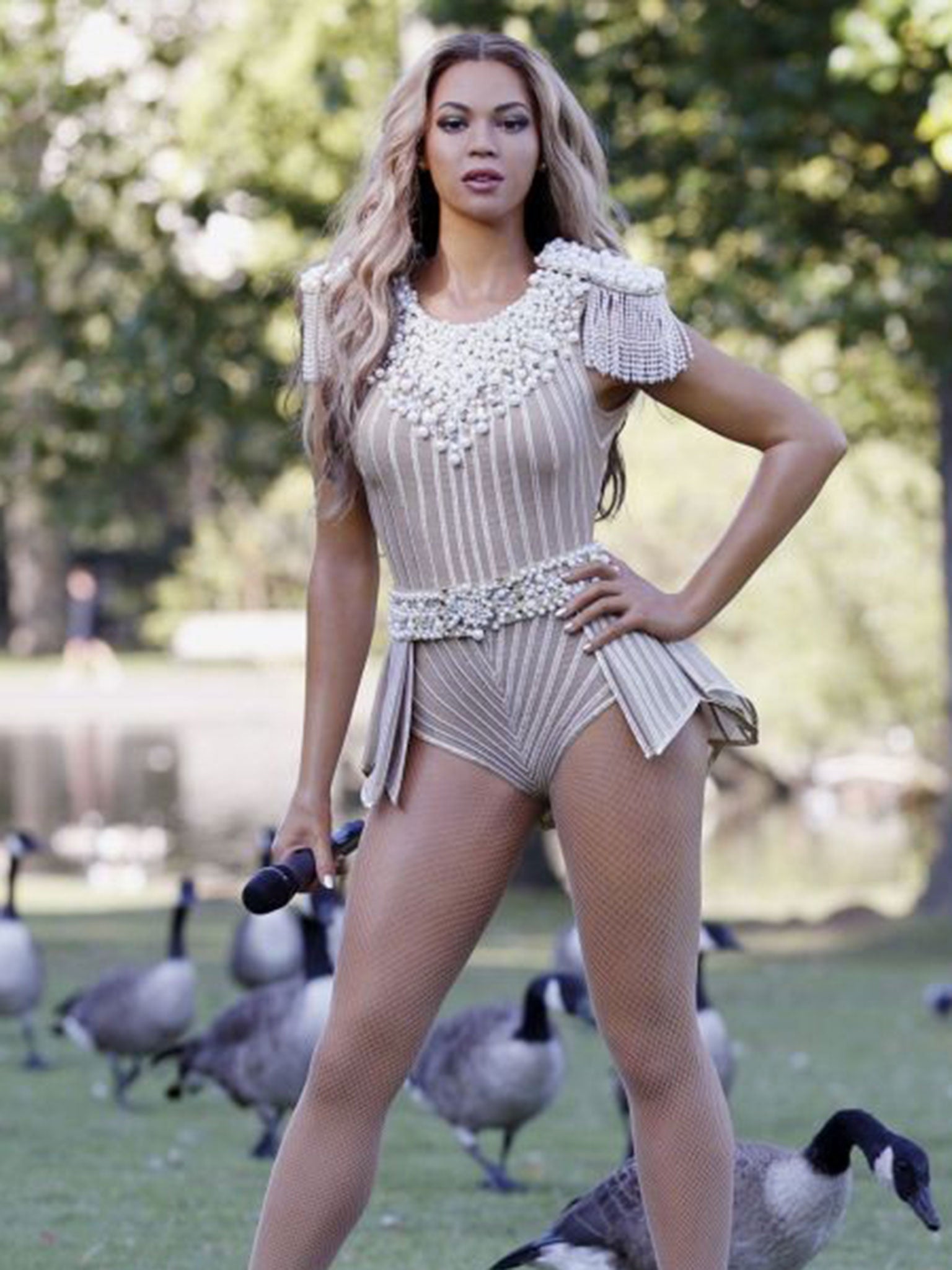Madame Tussauds has shown off its Beyoncé waxwork in Regent's Park - but why is the tourist attraction still pulling in the crowds?
Madame Tussauds is still thriving more than 230 years after Marie Tussaud made a wax Voltaire in 1777. Simon Usborne explains its centuries-old appeal

Your support helps us to tell the story
From reproductive rights to climate change to Big Tech, The Independent is on the ground when the story is developing. Whether it's investigating the financials of Elon Musk's pro-Trump PAC or producing our latest documentary, 'The A Word', which shines a light on the American women fighting for reproductive rights, we know how important it is to parse out the facts from the messaging.
At such a critical moment in US history, we need reporters on the ground. Your donation allows us to keep sending journalists to speak to both sides of the story.
The Independent is trusted by Americans across the entire political spectrum. And unlike many other quality news outlets, we choose not to lock Americans out of our reporting and analysis with paywalls. We believe quality journalism should be available to everyone, paid for by those who can afford it.
Your support makes all the difference.Chilly visitors to Regent's Park were this week struck by the incongruous sight of Beyoncé, dressed in a gold leotard and with hand on hip, standing amid scraggly grass, wandering geese and a considerable quantity of their droppings. Why? Because Madame Tussauds, the gaudy tourist money-trap on the park's south side, was showing off its latest waxwork (presumably without spending very much money).
It was the latest unveiling of the summer to prove that, despite the scornful thoughts with which most Londoners observe the queues outside the Marylebone Road attraction, the stock in celebrity wax remains irrepressibly high. Across the 20 Madame Tussauds that now cover the globe, the actors Hugh Bonneville, Selena Gomez and Olivia Newton-John have also been revealed this month, among many others. In London, crowds gathered in the hope of touching Ryan Gosling.
Perhaps predictably, wax has become political in Madame Tussauds' latest Chinese outpost. Marx is prominent in the Beijing branch, which opened in May, but no Mao, whose body is preserved in a not dissimilar state in his nearby mausoleum. Even so, more than 100,000 people have visited. The London flagship is still swamped, meanwhile, helping to boost the share price of the chain's newly floated owner, Merlin Entertainments.
That Madame Tussauds is still thriving more than 230 years after Marie Tussaud – an apprentice to a surgical model maker from Strasbourg – made a wax Voltaire in 1777, is testament to our sometimes ghoulish fascination with anatomical models preserved to look real, and, more significantly in recent decades, an obsession with celebrity (the closer we get the better). But it wasn't always like that.
As recently as the 1960s, waxworks were regarded less as three-dimensional facsimiles of Hello! photographs as works of art. Sir Roy Strong, the art historian and former director of the National Portrait Gallery and the Victoria and Albert Museum, asked in 1966, "Are we right in regarding Tussauds as a travelling sideshow come to a sudden and unexpected halt in Baker Street?
"Displayed anywhere else than in the fun fair atmosphere of Tussauds these would have been recognised years ago as a precious and unique collection… Tussauds, poised midway between museum and fun palace, can pioneer in a way denied to public institutions." Strong's patronage would inspire artists including Henry Moore to join the queues on Marylebone Road.

Much earlier in the history of the London attraction, which Tussaud opened in Baker Street in 1835, waxworks captivated visitors for whom the great and good were traditionally so far out of reach they could hardly be seen at all. And, as Pamela Pilbeam writes in Madame Tussaud and the History of Waxworks, "what was displayed was an intimately corporeal biographical history… Visitors might imagine how the person thought, but the body made no demands on their intellectual faculties in the way in which a written record does. The appeal of wax history is very democratic."
Tussaud had set out to provide "entertainment, artistic enlightenment, historical education and a place of pilgrimage", Pilbeam goes on. When the descendants of her first models arrived at the current home in 1883, The Daily Telegraph compared the exhibit with "the most reputable biographical dictionary".
Where does Beyoncé in her sparkling stadium regalia fit into this legacy, when the gap between us and the elevated has all but disappeared? Pretty well, judging by the popularity of Madame Tussauds at least (it no longer bothers with an apostrophe). Artistic enlightenment and education might be harder to find but wax is nothing if not mouldable, adapting easily and quickly to the ephemeral appeal of pop culture. Tussauds also skilfully exploits the vanity of its subjects, who still grin and gurn alongside themselves. Many attend sittings for sculptors. Boris Johnson was so keen on his future model that he reportedly gifted it his suit straight after his sitting (it features a tear in a trouser leg inflicted by his bicycle).
Less flattering than the arrival of a new model is the removal of an old one as celebrities fall out of favour. But the idea that models are melted down is a myth. Reports that Gary Barlow had been turned into Britney Spears when the Take That singer's career bombed in the late Nineties turned out to be false when he reappeared more recently, updated and re-clothed. Unwanted waxworks are instead put into storage or shipped to other branches. The worst that could happen to Beyoncé? A one-way ticket to Blackpool (or Berlin, or Bangkok or Wuhan…)
Join our commenting forum
Join thought-provoking conversations, follow other Independent readers and see their replies
Comments